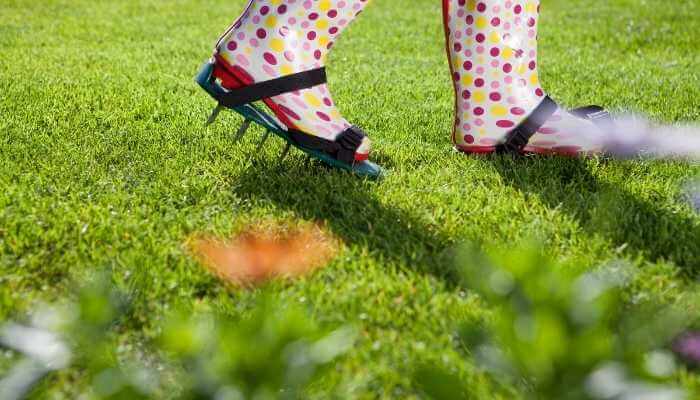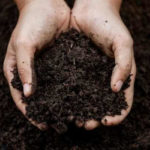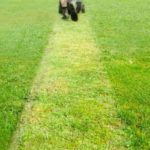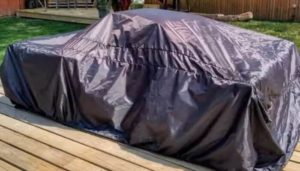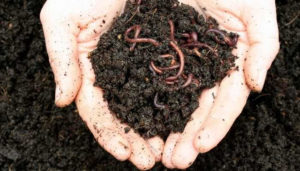You can get aerating shoes for $21.99. A manual lawn aerator is only around $79. You can buy a motorized aerator for anywhere from $169 to $200. You can even rent an aerator or hire someone to do it for you.
Lawn Aeration is a process to thicken your grass and make it healthier. It removes plugs of soil from the ground so oxygen, nutrients, and water can get to the roots of the grass, encouraging growth.
Should you? If you are, what should you know about the process? Let’s get more detailed, so you know what you’re doing!
Why Do We Aerate Lawns?
Aerating a lawn is the process of “coring” holes into your lawn so oxygen and moisture and added nutrients can penetrate that soil to the roots of your grass. In a raised bed garden, you only want to do this when the ground gets compacted and hardened. Work around your plants.
You can do this by stabbing holes into your lawn, sure. However, the specialized equipment you can get or rent pulls plugs of dirt up, leaving a large enough hole to make a big difference. That’s why it’s sometimes called coring.
In a yard, you can tell the ground needs aeration because of the state of the grass. When water and moisture aren’t penetrating your lawn well enough for it to bounce back after summer, it may be time to aerate your lawn. Aeration helps plants tolerate drought conditions better.
It can also be useful if your yard gets a lot of foot traffic and the soil gets compacted. Roots that are in denser dirt (Carolina Clay, for instance) don’t get enough oxygen and therefore may lack the ability to absorb more water and nutrients. This will stunt the growth of the grass.

Did You Know?
Not every lawn needs aeration. Dig into your soil somewhere that you can remove a one-foot section 6 inches deep and take stock of it. You do not need aeration if:
- Your earthworm community is thriving
- The roots of your grass go deeper than 2 inches
- You have more topsoil there than dense clay
- If you’ve got a newly seeded or sodded lawn, let that sit for a year at least before aerating.
Without the proper nutrients and moisture, your grass roots will weaken and let go. Your yard will experience bald spots. You don’t want bald spots in your yard. That opens the door for weeds and grass spurs to grow.
What to Do Before Aerating Your Lawn
Figure out what kind of grass you have. This is important. The timeframe for aeration depends on the type of grass you have. If you have cool-season grass, the aeration process needs to happen in the spring before applying pesticides or in the fall before overseeding. If you have warm-season grass, aerate in the summer when the grass is in full growth.
| COOL-SEASON GRASS | WARM-SEASON GRASS |
|---|---|
| Kentucky Bluegrass | Bermuda Grass |
| Fine Fescue | St. Augustine Grass |
| Tall Fescue | Zoysia Grass |
| Ryegrass | Bahia Grass |
| Mixes of these seeds that are made for specific conditions | Centipede Grass |
Once you know if you should aerate your lawn and when to aerate your lawn, it’s time to figure out if it’s a project you can handle. Maybe you should leave it to the professionals. Most lawn care companies know how and when to aerate a lawn. They also have the equipment to handle the job.
If you decide to do the job yourself, you’ll need to decide on the equipment. You can either spike aerate or core aerate. Spikes put small holes in the ground, but because they don’t remove any dirt, they’re honestly just compacting the lawn more.
Coring is a method of aeration, wherein the “spikes” are actually hollow and remove little cylinders of soil from the ground. Therefore, it’s not further compacted and there are still holes left for what’s needed. The little cylinders are called plugs, and you should just leave them where they are. They should break down after watering or rain.
Before you aerate your lawn, mow it and then water it thoroughly. It’s recommended by most of the companies I’ve asked and most websites I’ve visited to wait 2 days after your cutting and major watering to aerate the lawn. You don’t want dry soil, but you also don’t want soil that’s too wet when you aerate.
One extension office recommended that you water your lawn with one inch of water. To measure this, (especially if you use sprinklers of any kind), place a small open tuna can or something similar in size in the yard to catch the water. Once that container is full, you know that portion of the lawn is watered enough.
If you have a buried sprinkler system or lighting in your yard, you need to mark it, so no damage occurs. Also, if you plan on buying a large machine or renting one, have a vehicle that can handle it. Get help with loading and unloading it. These things can be pretty stout. If you rent, go by company guidelines on returning the equipment. You may need to wash it before you return it.
Plan on making passes over the lawn enough times to leave 20–40 holes per square foot. Just know you’ll probably be going over the lawn with your choice of machinery twice, at least. This may influence whether you’re handling this manually!
What to Do After Aerating Your Lawn
Well, after you aerate your lawn, you need to follow some guidelines, but it’s nothing too crazy. It’s actually very simple. As I mentioned before, you’re going to want to leave those plugs (the cylinders of soil that the aerator has left lying around) on the ground. They’ll eventually break up and go right back to being part of the yard.
Before that, while the holes are still abundant and obvious, fertilize the lawn. This is going to encourage root growth and stimulate the thickening of your grass. You want thick grass because that prevents weeds and, well; you wanted a nice-looking yard anyway, right?
You probably also should reseed your lawn with the type of grass seed you want to see growing there. Bermuda is a natural here, but I’m allergic to it. I usually push fescue on my lawns hard! Or, I dig the lawn up and replace it with beds of flowers that bees and butterflies love or use the lawn for gardening. But that’s just me. You use the seed of your choice.
In Conclusion
Aeration is important for gardening as well as landscaping the grass in your yard. Aerating your grass is a bit more complicated. I hope I’ve explained things appropriately to you. Also, remember that aerating doesn’t give you immediate results.
When we had it done, it took a full year to see the thickening and see the grass become much greener. There were hardly any weeds to contend with by year two of having this done. If you get on a yearly schedule of aerating, you should see benefits in the same timeframe.
